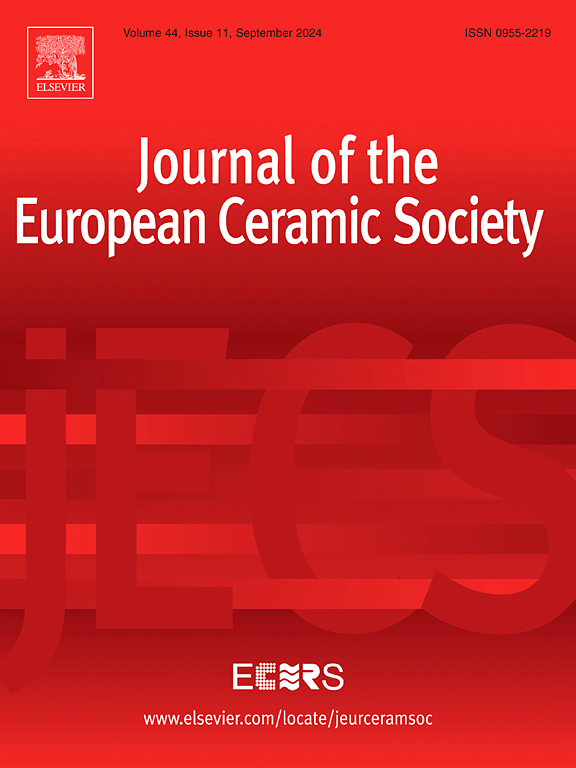Optimal design and evaluation of direct ammonia SOFC based on defect-induced LaySr0.3Cr0.85Ni0.15O3-δ anode
IF 5.8
2区 材料科学
Q1 MATERIALS SCIENCE, CERAMICS
Journal of The European Ceramic Society
Pub Date : 2025-06-12
DOI:10.1016/j.jeurceramsoc.2025.117622
引用次数: 0
Abstract
The development of the anode with high catalytic activity for ammonia (NH3) oxidation and compatible with electrolyte is of great significance for the commercial application of direct ammonia solid oxide fuel cells (NH3-SOFC). The work showed an enhancement of electrochemical performance by optimal design and molecular engineering insights into ammonia oxidation mechanism in depth. Sr-doped LaCr0.85Ni0.15O3 (LSxCN) oxides and defect-induced LaySr0.3Cr0.85Ni0.15O3 (LyS0.3CN) oxides were developed to establish the structure-performance relationship of the component-optimized anodes. After optimal design of the single cell structure, it was found that the electrochemical activity can be significantly improved by adding the isolation layer Gd0.2Ce0.8O2 (GDC) and tuning the defective nonequilibrium of LyS0.3CN. As a result, the electrolyte-supported NH3-SOFC using defect-induced L0.60S0.3CN anode with 50 sccm NH3 as fuel gas gives the maximum power density of 501 mW/cm2 at 800 ℃, 8.8 times higher than that of traditional NiO anode (57 mW/cm2). Based on relaxation time distribution analysis, the preferential rate-limiting step of the single cell may be proposed.
基于缺陷诱导LaySr0.3Cr0.85Ni0.15O3-δ阳极的直接氨SOFC优化设计与评价
开发具有高氨(NH3)氧化催化活性且与电解质兼容的阳极对直接氨固体氧化物燃料电池(NH3- sofc)的商业化应用具有重要意义。通过优化设计和分子工程对氨氧化机理的深入研究,表明了电化学性能的提高。制备了掺杂sr的LaCr0.85Ni0.15O3 (LSxCN)氧化物和缺陷诱导的LaySr0.3Cr0.85Ni0.15O3 (LyS0.3CN)氧化物,建立了组件优化阳极的结构-性能关系。通过对单体结构的优化设计,发现添加隔离层Gd0.2Ce0.8O2 (GDC)和调整LyS0.3CN的缺陷不平衡可以显著提高电化学活性。结果表明,以缺陷诱导的L0.60S0.3CN为阳极,以50 sccm NH3为燃料气体的电解质负载NH3- sofc在800℃下的最大功率密度为501 mW/cm2,是传统NiO阳极(57 mW/cm2)的8.8倍。基于弛豫时间分布分析,可以提出单细胞的优先限速步长。
本文章由计算机程序翻译,如有差异,请以英文原文为准。
求助全文
约1分钟内获得全文
求助全文
来源期刊

Journal of The European Ceramic Society
工程技术-材料科学:硅酸盐
CiteScore
10.70
自引率
12.30%
发文量
863
审稿时长
35 days
期刊介绍:
The Journal of the European Ceramic Society publishes the results of original research and reviews relating to ceramic materials. Papers of either an experimental or theoretical character will be welcomed on a fully international basis. The emphasis is on novel generic science concerning the relationships between processing, microstructure and properties of polycrystalline ceramics consolidated at high temperature. Papers may relate to any of the conventional categories of ceramic: structural, functional, traditional or composite. The central objective is to sustain a high standard of research quality by means of appropriate reviewing procedures.
 求助内容:
求助内容: 应助结果提醒方式:
应助结果提醒方式:


